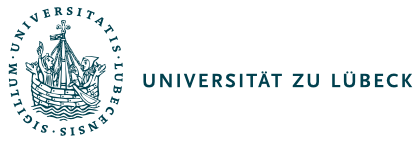Duration:
1 Semester | Turnus of offer:
each winter semester | Credit points:
6 |
Course of studies, specific field and terms: - Bachelor MES 2020 (compulsory), computer science, 5th semester
- Bachelor Media Informatics 2020 (optional subject), computer science, 5th or 6th semester
- Bachelor Computer Science 2019 (compulsory), foundations of computer science, 3rd semester
- Bachelor Robotics and Autonomous Systems 2020 (compulsory), computer science, 3rd semester
- Bachelor Medical Informatics 2019 (optional subject), computer science, 4th to 6th semester
- Bachelor Computer Science 2016 (compulsory), foundations of computer science, 3rd semester
- Bachelor Robotics and Autonomous Systems 2016 (compulsory), computer science, 3rd semester
- Bachelor Medical Informatics 2014 (optional subject), computer science, 5th or 6th semester
- Bachelor Media Informatics 2014 (optional subject), computer science, 5th or 6th semester
- Bachelor MES 2014 (compulsory), foundations of computer science, 5th semester
- Bachelor Computer Science 2014 (compulsory), foundations of computer science, 3rd semester
- Bachelor IT-Security 2016 (optional subject), specific, Arbitrary semester
|
Classes and lectures: - Fundamentals of Computer Engineering 2 (exercise, 2 SWS)
- Fundamentals of Computer Engineering 2 (lecture, 2 SWS)
| Workload: - 20 Hours exam preparation
- 100 Hours private studies
- 60 Hours in-classroom work
| |
Contents of teaching: | - Design of combinatorial circuits
- Design of sequential circuits
- Hardware description languages
- Register-transfer languages
- Data paths
- Control units
- Microprogramming
- CPUs
- Semiconductor components and circuit families
- Integrated circuits
- Programmable logic (CPLDs, FPGAs)
- CAD-tools for circuit design
| |
Qualification-goals/Competencies: - The students can formally describe and design combinatorial and sequential circuits on gate level.
- They can use hardware description languages, particularly VHDL, for the modelling of simple circuits.
- They can formally describe and design sequential circuits with control unit and data path on register-transfer level.
- They can exploit microprogramming for the realization of control units.
- They can design simple processors (CPUs).
- They can elucidate and judge the most important technologies for the realization of simple digital circuits (bipolar, MOS, CMOS).
- They can describe and judge integrated circuits, in particular programmable logic like FPGAs.
- They can use CAD-tools to design, to simulate and to implement digital circuits on FPGAs.
|
Grading through: |
Is requisite for: |
Requires: |
Responsible for this module: Teachers: |
Literature: - T.L. Floyd: Digital Fundamentals - A Systems Approach - Pearson 2012
- M. M. Mano, C. R. Kime: Logic and Computer Design Fundamentals - Pearson 2007
- C. H. Roth, L.L. Kinney: Fundamentals of Logic Design - Cengage Learning 2009
|
Language: |
Notes:Prerequisites for attending the module:
- None
Prerequisites for the exam:
- Successful completion of homework assignments during the semester
- continuous, successful participation in practical course |
Letzte Änderung: 21.2.2023 |



















für die Ukraine